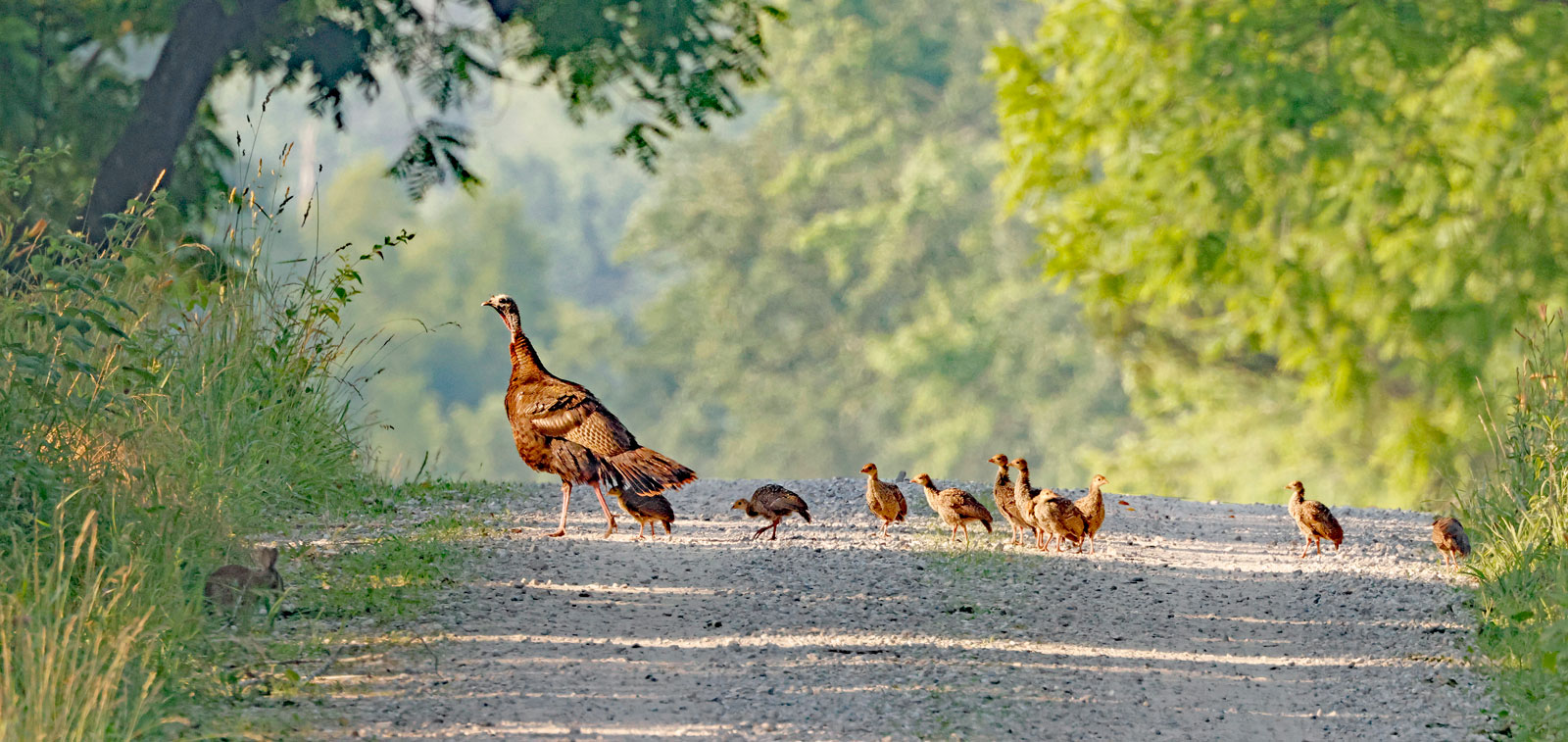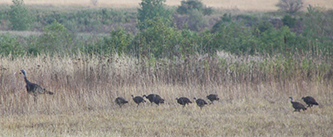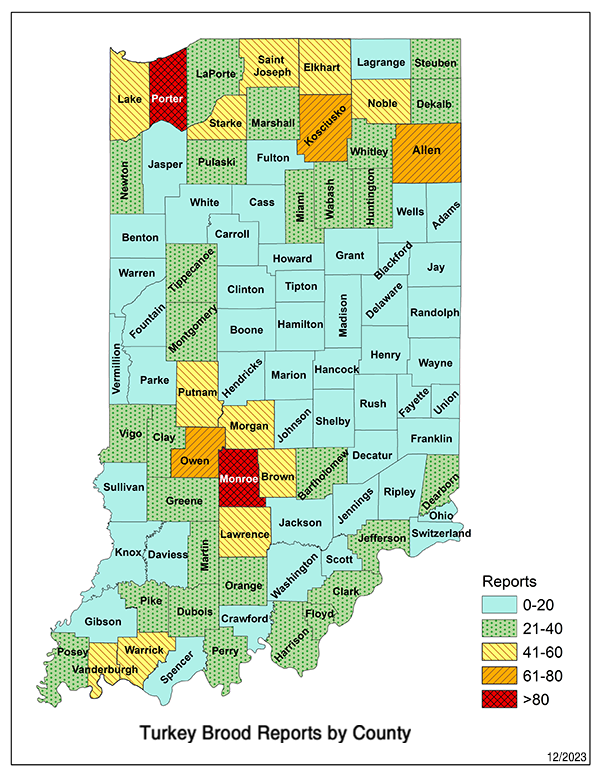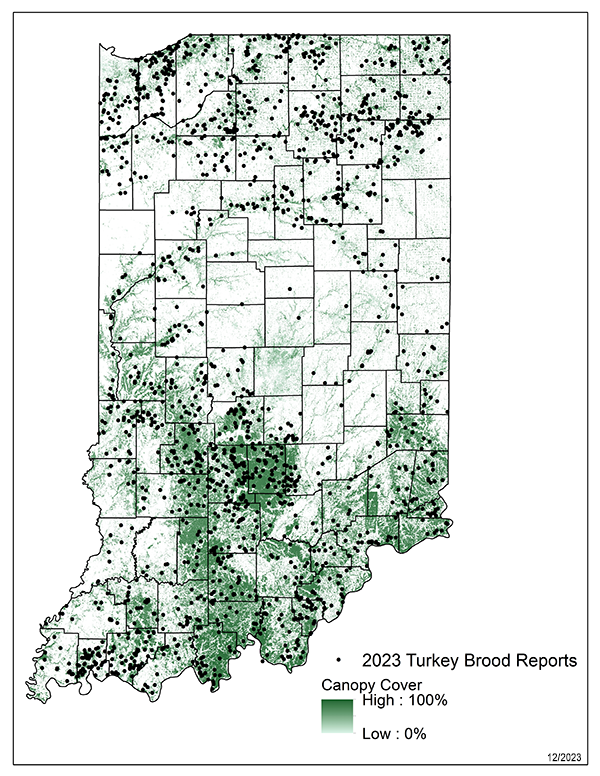The wild turkey brood reporting period is July 1 - Aug. 31

Wild turkey hen with ten poults. Photo by Dan Kaiser.
Help the DNR Division of Fish & Wildlife monitor summer production of wild turkeys by recording wild turkey sightings during July and August using our online survey tool.
Why count turkeys?
Brood surveys provide useful estimates about annual production by wild turkey hens and the survival of poults (young turkeys) through the summer brood-rearing period. Summer brood survival is generally the primary factor influencing wild turkey population trends. Information on summer brood survival is essential for sound turkey management. Information gathered through the brood survey includes:
- Average brood sizes (hens + poults). For example, in the photo above there is one hen and 10 poults, for a brood size of 11.
- Percentage of adult hens with poults.
- Production Index (PI) = total number of poults/total number of adult hens
What is a wild turkey brood?
A wild turkey brood is composed of at least one adult hen with young (poults). As the summer progresses, multiple broods may gather into what is termed a “gang” brood with several adult hens and multiple broods of poults of varied ages. During summer, adult gobblers (male turkeys) play no role in raising a brood and either form small male only “bachelor” flocks or are observed as a single gobbler.
No gobblers should be reported.
- 2023 Turkey Brood Report
- 2022 Turkey Brood Report
- 2021 Turkey Brood Report
- 2020 Turkey Brood Report
- 2019 Turkey Brood Report
- 2018 Turkey Brood Report
- 2017 Turkey Brood Report
What should I report if I see a turkey brood or some turkey hens without poults?
We are interested in the following observations of turkeys from across the state:
- Number of adult hens with the number of poults or
- Number of adult hens without poults and
- County and date of each observation.
Please provide as accurate a count of both hens and poults as possible. It is also just as important to record observations of hens without poults. Don’t compile multiple observations as one report, instead report each different observation separately, even if observations of different broods are made on the same day in the same county. Understand that by mid to late August, turkey poults are normally about two-thirds the size of an adult, and a juvenile gobbler (jake) can be about the same size as an adult hen. Suspected repeat observations of the same turkeys during the same month should not be recorded.

Wild turkey hen with eight poults.
Need help identifying male and female turkeys?
Females are generally smaller in body size, about the size of a Canada Goose (8-12 lbs), and their coloration is duller brown to buff with no obvious iridescence. In general, female wild turkeys do not have a visible beard. In contrast, males have larger bodies, much larger than a Canada Goose (18-28 lbs), and their general coloration is very dark, appearing black with an iridescent sheen. Most adult male wild turkeys have a visible beard.
Turkey Teaser Results
The full brood report will be posted above once it is available. In the meantime, enjoy these maps that show participation by county and brood reports by landcover from the 2023 Turkey Brood Reporting period. If there are no reports from your area, but you saw a turkey brood this past summer, make sure to check back in July and August to submit your own reports and contribute to turkey management.
If you have questions about the turkey brood survey, please email Wildlife Index, at wildlifeindex@dnr.IN.gov.


